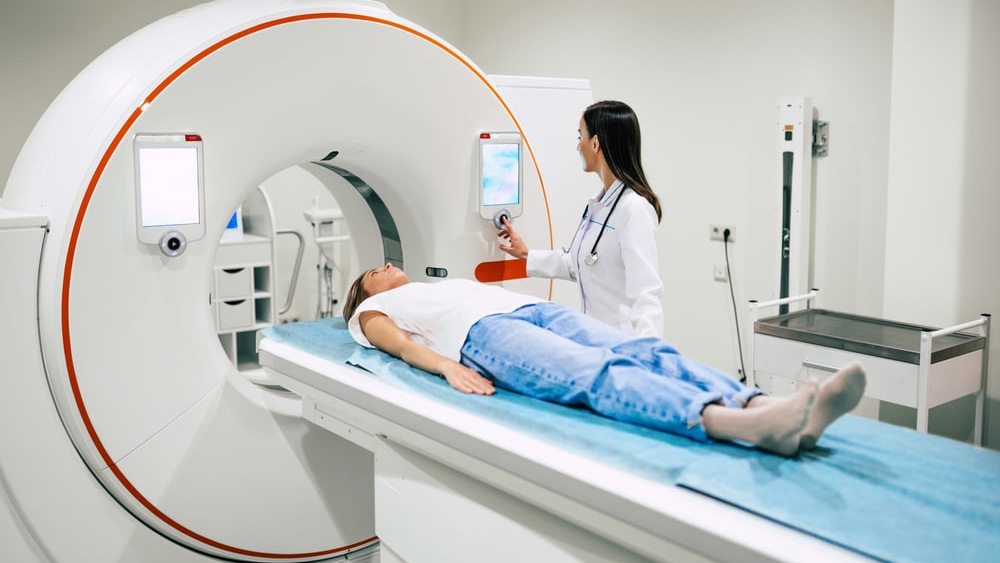CT Scan: A Simple Guide for Patients
1. Introduction:
A CT (Computed Tomography) scan is a specialized imaging test that provides detailed cross-sectional images of the body using X-rays and computer technology. It helps doctors diagnose and monitor various conditions.
2. Purpose:
A CT scan is used to detect and evaluate:
- Head injuries, strokes, or brain abnormalities
- Lung diseases and infections
- Abdominal conditions, including kidney stones and tumors
- Bone fractures and joint problems
- Cancer detection and monitoring
3. Procedure:
- The patient lies on a motorized table that moves through a donut-shaped scanner.
- X-ray beams rotate around the body to capture detailed images.
- The scan usually takes 5–15 minutes.
- Some scans require contrast dye for better clarity.
4. Preparation:
- Wear loose, comfortable clothing without metal objects.
- Remove jewelry, eyeglasses, or other metallic items.
- If contrast dye is needed:
- Do not eat or drink for 4–6 hours before the scan.
- Inform the technician if you have allergies or kidney problems.
- A Serum Urea and Creatinine Test may be required before the scan to assess kidney function, as contrast dye can affect kidney health.
- A contrast medium may be injected or taken orally.
5. CT Contrast:
- Contrast dye helps enhance the visibility of blood vessels, organs, and tissues.
- It can be administered in different ways:
- Oral Contrast: A liquid you drink before the scan to highlight the digestive tract.
- Intravenous (IV) Contrast: Injected into a vein to highlight blood vessels and organs.
- Rectal Contrast: Occasionally used for certain abdominal scans.
- Side effects are rare but may include a warm sensation, a metallic taste, or mild nausea.
- Serum Urea and Creatinine Test: This test helps evaluate kidney function to ensure the safe use of contrast dye, as impaired kidney function can lead to complications.
- Patients with kidney disease, diabetes, or contrast allergies should inform their doctor before the scan.
6. During the Test:
- You will lie still while the scanner captures images.
- You may hear buzzing or clicking sounds from the machine.
- The technician will communicate through an intercom and may ask you to hold your breath briefly.
7. After the Test:
- You can resume normal activities unless instructed otherwise.
- If contrast dye was used, drink plenty of water to flush it out.
- Your doctor will review the results and discuss the findings with you.
8. FAQs:
- Is a CT scan painful?
No, it is a painless procedure. - Is the radiation harmful?
The exposure is minimal and considered safe; your doctor ensures the benefits outweigh the risks. - Can I have a CT scan during pregnancy?
It is generally avoided unless absolutely necessary. - How soon will I get my results?
Typically within 24–48 hours.
For any concerns or specific instructions, consult your doctor or radiology center.
